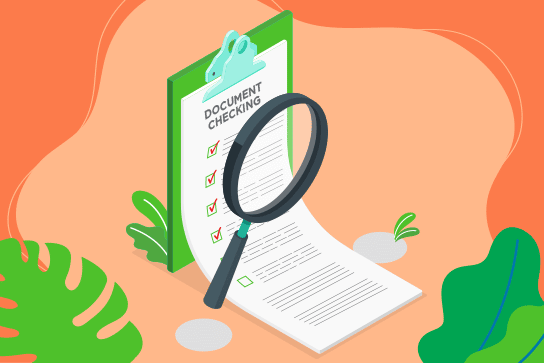LISTEN AUDIO
Last Updated on April 7, 2023 by Ozlinks Education
This unit SITHKOP001 describes the performance outcomes, skills and knowledge required to clean food preparation areas, storage areas, and equipment in commercial kitchens to ensure the safety of food. It requires the ability to work safely and to use resources efficiently to reduce negative environmental impacts.
This unit is particularly important within a food safety regime and applies to all hospitality and catering organisations with kitchen premises, including permanent or temporary kitchens or smaller food preparation areas. These can be found within restaurants, cafes, kiosks, cafeterias, clubs, hotels, attractions and in catering facilities.
The unit applies to kitchen personnel who work with very little independence and under close supervision, including kitchen attendants and stewards. It can also apply to cooks and chefs in small organisations.
Elements and Performance Criteria
Elements describe the essential outcomes. Performance criteria describe the performance needed to demonstrate achievement of the element.
1. Clean and sanitise kitchen equipment.
1.1 Select and prepare cleaning agents and chemicals according to cleaning schedule and product instructions.
1.2 Clean and sanitise kitchen equipment to ensure safety of food that is prepared and served to customers.
2. Clean service-ware and utensils.
2.1 Sort service-ware and utensils and load dishwasher with appropriate items.
2.2 Hand wash any items not appropriate for dishwasher.
2.3 Dispose of broken or chipped service-ware within scope of responsibility, and report losses to supervisor.
3. Work safely and reduce negative environmental impacts.
3.1 Clean and sanitise kitchen surfaces, and food preparation and storage areas according to cleaning schedule to ensure the safety, of food that is prepared, and served to customers.
3.2 Clean areas of any animal, and pest waste, and report incidents of infestation.
3.3 Follow safety procedures, in the event of a chemical accident.
3.4 Sort and remove linen, according to organisational procedures.
3.5 Sort and promptly dispose, of kitchen waste to avoid cross-contamination, with food stocks.
4. Work safely and reduce negative environmental impacts.
4.1 Use cleaning agents, chemicals, and cleaning equipment safely and according to manufacturer instructions.
4.2 Use personal protective equipment and safe manual handling techniques when cleaning equipment and premises.
4.3 Reduce negative environmental impacts through efficient use of energy, water, and other resources.
4.4 Sort general kitchen waste from recyclables and dispose of them in designated recycling bins.
4.5 Safely dispose of kitchen waste, especially hazardous substances, to minimise negative environmental impacts.
Food preparation and storage areas
Food preparation and storage areas must include:
- benches and working surfaces.
- cool rooms
- cupboards
- pantry
- freezers
- fridges
- microwaves
- ovens
- storerooms
Assessment Requirements
Performance Evidence
Evidence of the ability to complete tasks outlined in elements and performance criteria of this unit in the context of the job role, and:
- efficiently follow cleaning schedules to clean food preparation and food storage areas in a commercial kitchen on at least six different occasions
- clean each of the following large and small equipment items on at least six occasions according to cleaning schedules:
cooking equipment:
- large and small pots
- fry pans
- deep-fryers
- baking trays
dishwashers
garbage bins
glasswashers
measures:
- scales
- temperature probes
mechanical food preparation equipment:
- commercial mixers: food processors, blenders, and attachments
- mincers
- slicing machines
ovens
clean and replenish the following commercial service-ware and utensils on at least six occasions:
- cutting boards
- containers
- cooking utensils
- crockery and dishes
- cutlery
- glassware
- graters and peelers
- knives
sort soiled linen and prepare for collection by laundry staff according to organisational procedures on at least six occasions:
- cleaning cloths
- clothing
- napkins
- serving cloths
- tablecloths
- tea towels
perform the above cleaning work demonstrating use of:
- different types of cleaning agents and chemicals for kitchens and equipment.
- cleaning, sanitising and disinfecting methods for kitchens and equipment.
- correct and environmentally sound disposal methods for waste and hazardous substances.
- efficient use of energy, water and other resources.
complete above cleaning tasks:
- within commercial time constraints.
- selecting and using correct personal protective equipment.
Knowledge Evidence
Demonstrated knowledge required to complete the tasks outlined in elements and performance criteria of this unit:
- hygiene and cross-contamination issues for kitchens and the importance and purpose of cleaning regimes
- different types of cleaning and sanitising products and chemicals for kitchens and equipment:
automatic dishwasher:
- liquid
- powder
- tablets
bleach
cleaning agents for specialised surfaces
deodorisers
dishwashing liquid
disinfectants
floor cleaners
glass cleaner
pesticides
stainless steel cleaner and polish
window cleaner
- uses of different types of cleaning and sanitising products and chemicals for kitchens and equipment
- safe practices for using and storing different types of cleaning and sanitising products, chemicals and hazardous substances
- safe operational practices using essential functions and features of equipment used to clean kitchen premises and equipment
- content of safety data sheets (SDS) for cleaning agents and chemicals, or plain English workplace documents or diagrams that interpret the content of SDS.
- cleaning, sanitising and disinfecting methods that avoid risk to food for the following food preparation and storage areas:
- kitchen floors, shelves and walls.
- kitchen equipment, service-ware and utensils.
- purpose of the following personal protective equipment used when cleaning:
- face masks
- gloves
- goggles
- rubber aprons
- safe manual handling techniques for cleaning equipment and premises, especially bending, lifting and carrying heavy equipment
- environmental impacts of cleaning commercial kitchens and equipment and minimal impact practices to reduce them, especially those that relate to water and energy use
- correct and environmentally sound disposal methods for kitchen waste:
broken service-ware
food waste
hazardous substances:
- animal fat
- chemicals
- cleaning agents
- cooking oils
- ghee
- grease
pest waste
recyclables:
- glass bottles and jars
- plastics
- paper and cardboard
- tin or aluminium containers
- fruit and vegetable matter
used or out of date ingredients and food items
- organisation-specific information:
contents of cleaning schedules
contents of safety procedures for chemical accidents
procedures for disposing of contaminated food
reporting mechanisms for infestations
standards of presentation for the premises.
Assessment Conditions
Skills must be demonstrated in an operational commercial kitchen. This can be:
- an industry workplace
- a simulated industry environment, such as a training kitchen servicing customers.
Assessment must ensure access to:
- commercial kitchen with food preparation and storage areas with floor, walls and shelves
- fixtures and large equipment:
bain marie or hot box
commercial:
- blenders and food mills
- mixers and attachments
commercial dishwasher
commercial grade work benches
commercial ovens with timer and trays:
- convection
- deck
- microwave
commercial refrigeration facilities:
- cool room
- freezer
- fridge
electronic equipment used for stock control
deep-fryer
double sink
gas, electric or induction stove tops
salamander or other form of griller
storage facilities:
- shelving
- trays
slicing machine
- small equipment:
cutting, chopping and slicing implements
cutting boards
graters
knives and cleavers:
- butcher and boning knives
- butter spreading knives
- bread knives
- carving knives
- large serrated cake knives
- filleting knives
- utility knives
measurers:
- metric calibrated measuring jugs
- measuring spoons
- portion control scoops and markers
meat:
- bats
- cleavers
- hooks
- thermometers
- mincers
- saws
scales (1 gram increments) and scales for weighing large quantities.
scoops, skimmers and spiders.
service-ware:
- platters, dishes and bowls.
- cutlery and serving utensils.
small utensils:
- flour and drum sieves.
- peelers, corers and slicers.
- strainers and chinois.
- Scrapers
- spatulas
- pastry brush
- tongs and serving utensils
whisks:
- fine stainless steel wire
- coarse stainless steel wire
spoons:
- large plain and slotted metal spoons
- ladles in a variety of sizes
- serving spoons
- wooden spoons
temperature probes
thermometers
personal protective equipment specified in the knowledge evidence
- cleaning materials and equipment:
cleaning cloths
commercial cleaning and sanitising agents and chemicals for cleaning commercial kitchens, equipment and food storage areas
dishwashers
dustpans and brooms
floor scrubbers or polishers
garbage bins and bags
mops and buckets
pressurised steam and water cleaners
sponges, brushes and scourers
swabs
tea towels
waste sink for mops
- organisational specifications:
equipment manufacturer manuals
current commercial stock control procedures and documentation for ordering, monitoring and maintaining cleaning stock
commercial cleaning schedules
food preparation lists
ordering and docketing paperwork
safety procedures for chemical accidents
SDS for cleaning agents and chemicals and plain English workplace documents or diagrams that interpret the content of SDS.



